MORET-SUR-LOING – ANOTHER IN THE OCCASIONAL SERIES, TRAVELS WITH YOUR NAVIGO
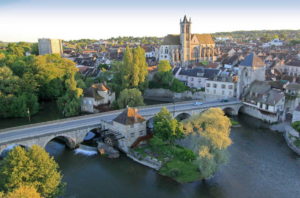
This picturesque medieval town lies along the banks of the tranquil waters of the river Loing, a tributary of the Seine, just a little over 9 kms from the south–east edge of the forest surrounding the Chateau de Fontainebleau. The town is postcard pretty, offering many opportunities for keen photographers. It also inspired many Impressionist painters such as Monet, Renoir and in particular Alfred Sisley, who spent the last 20 years of his life there.
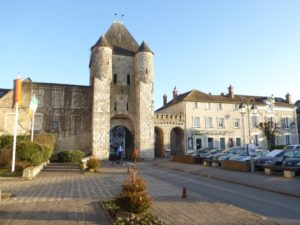
Walking down the long Ave. Jean Jaurès from the railway station, the first sight of the town the visitor sees is one of the impressive fortified towers, the Porte de Samois, that once defended the town.
You pass through the arch to enter the Grande Rue, and the other tower is at the far end of this street.
At one stage, there were over twenty towers and more than a kilometre of fortified walls enclosing the town, reflecting its history as a stronghold of the Dukes of Burgundy. There are some remains of these walls visible today.

The Tourist Office is located at no. 4 Bis Place de Samois, just before you go through the Porte de Samois. Pop in for a town map, and to obtain information about the walks in and around the town as well as the walking tour ‘In Sisley’s Footsteps’ that visits the places where the painter set down his easel.
There is a bust of the painter in front of the Tourist Office, although unfortunately he was completely unrecognised as an artist during his lifetime and died in poverty.
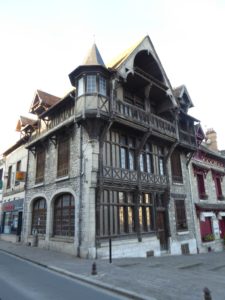
Walking along the Grande Rue and into a number of the side streets you will see several very impressive half-timbered houses. Keep an eye out for the Maison Recollet, a pretty medieval house with a balcony in the Place de l’Hotel de Ville.
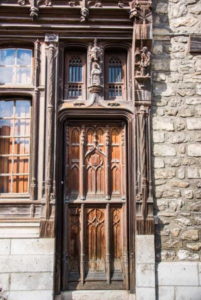
You also shouldn’t miss the rich decoration of the renaissance-era stonework depicting the labours of Hercules alternately with floral motifs, in the courtyard of the Hotel de Ville, dating from 1527 and known as the Gallery of Francois 1. There are also numerous interesting medieval houses to be seen in the square around the church, near the end of rue de Grez.
Next to the town’s famous bridge, housed in one of the many picturesque half-timbered buildings, is the Musée du Sucre d’Orge des Religieuses de Moret.
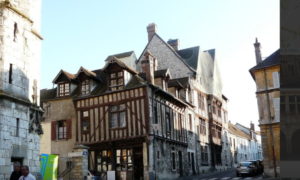
This is a barley sugar-making museum that celebrates these sweets that have been made in the town to a secret recipe for hundreds of years, and also lays claim to having the oldest sweets in France in its collection!
The most important historic monument in Moret-sur-Loing is the church of Notre Dame in rue du Donjon, which dates from 1166 and consecrated by Thomas a Becket.
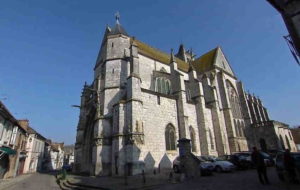
The Gothic style façade is considered to be one of the best in the region, and particularly the intricate stonework around the doorway.
Opposite the church in the Place Royale is the Maison du Bon Saint Jacques, the medieval pilgrim’s inn from where the nuns sold the famous sucres d’orge.
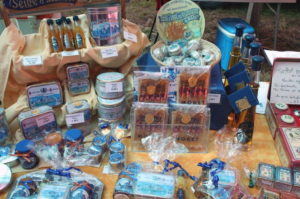
These days, you can buy pretty little tins of these sweets in the local patisseries.
Nearby in rue du Donjon you will see the Donjon, (tower), built in 1128, which is all that remains of the medieval castle, around which the town originally developed in the 12th century.

The most famous prisoner was Nicolas Fouquet, Louis XIV’s finance minister, who was jailed for corruption. Alfred Sisley lived at no. 9 rue du Donjon.
At the end of the Grande Rue you pass through the Porte de Bourgogne, the other imposing stone tower that’s only slightly less ornate than the first, where you’ll arrive at the bridge that crosses the river Loing and overlooks two ancient mill houses in mid-stream.
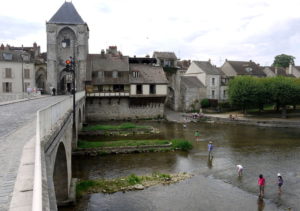
This bridge is one of the town’s most outstanding landmarks and affords a lovely view of the town and the riverbanks. There is also a footpath that takes you along by the river where you can still appreciate the aspects and views that the Impressionists found so appealing.
If you go down to the quayside on the right, this is known as the Quai des Laveuses, where the local women brought their laundry to wash on the riverbank.
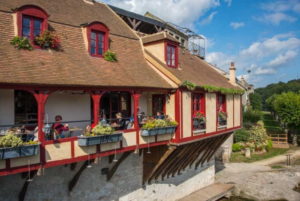
Back on Rue Grande, if you cross the bridge over the river Loing onto the Route de St Mammès, you can compare the view from the riverside park with one of the many paintings Sisley did of Le Pont de Moret around 1893, one of which hangs in the Musée d’Orsay in Paris.
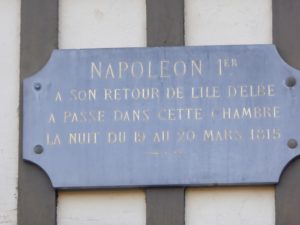
One of the interesting titbits of history is that Napoleon spent a night on his return from Elba at the Hotel de Ville, which was just an inn back in 1815. Up by the Porte de Samois you can see a canon ball, a remnant of the Napoleonic War when Austrian and Prussian troops marched on Paris.
Another fascinating snippet of historical gossip tells that Louis XIV sent his alleged illegitimate daughter to a convent. Known as La Mauresse de Moret, The Black Nun of Moret, she was Sister Louise Marie-Therese, a Benedictine nun in the abbey of Moret-sur-Loing—the former convent is adjacent to the Post Office.
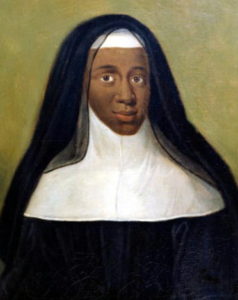
Scholars have determined that she was very possibly the daughter of the French Queen, Maria Theresa of Spain, wife of Louis XIV, who was rumoured to have given birth to a black child in 1664. A portrait of her, dating from around 1680 by the same hand which painted a series of 22 pastel portraits of various Kings of France, exists in the Bibliothèque Sainte Genevieve in Paris. She is mentioned in the memoirs of Cardinal Dubois, the Duke de Saint-Simon, Madame de Maintenon and Madame de Montespan, among others. However, Voltaire was convinced the nun was Louis’ own illegitimate child, since “she was extremely dark-skinned and, furthermore, bore a striking resemblance to him (Louis XIV)”—Voltaire.
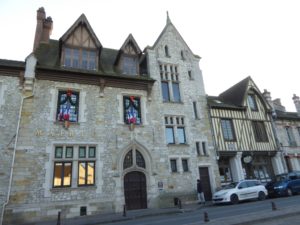
If you intend to visit the town during the summer months, try and visit on a Saturday evening, when you will be treated to the very popular Son et Lumiere (Sound and Light), show that tells the story of the town’s history through dramatic lighting and vibrant musical score.
A visit to Moret-sur-Loing makes a delightful change of pace for a day’s excursion from Paris, either on its own or combined with a visit to the wonderful Chateau de Fontainebleau.

It’s very straightforward:
From Gare de Lyon, take an SNCF (Grandes Lignes) train and it’s just 3 stops past Fontainebleau-Avon, direction Montargis or Montereau. The journey takes around 45 mins. and trains depart roughly every hour.
By car it’s 77 kms. on the A6 and takes about an hour 20 mins.
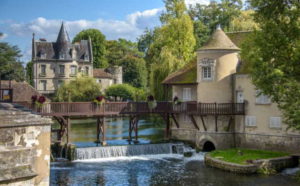


Leave a Reply